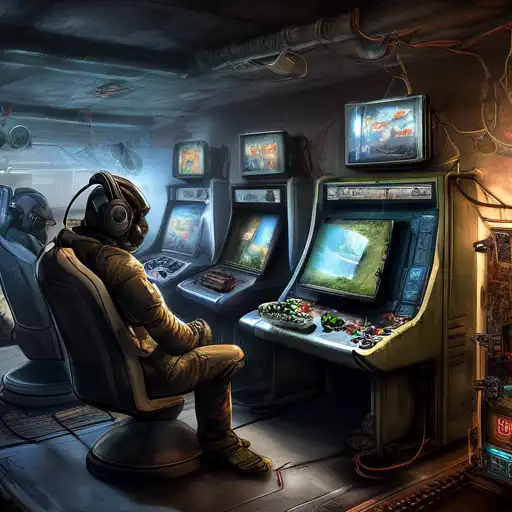The Revolutionary Journey of Gaming Technology Through the Ages
The evolution of gaming technology is a fascinating tale of innovation, creativity, and technological advancement. From the simple pixelated games of the 1970s to the immersive virtual reality experiences of today, gaming technology has undergone a remarkable transformation. This article explores the key milestones in the evolution of gaming technology and how it has shaped the way we play and interact with games today.
The Dawn of Gaming: The 1970s and 1980s
The journey of gaming technology began in the 1970s with the introduction of arcade games like Pong and home consoles such as the Atari 2600. These early games were simple, with basic graphics and gameplay, but they laid the foundation for the gaming industry. The 1980s saw the rise of personal computers and the introduction of more sophisticated games, including the iconic Super Mario Bros. on the Nintendo Entertainment System (NES).
The 1990s: The Era of 3D Graphics and Online Gaming
The 1990s marked a significant leap forward with the advent of 3D graphics, thanks to consoles like the Sony PlayStation and the Nintendo 64. This era also saw the birth of online gaming, with titles like Quake and Ultima Online paving the way for multiplayer experiences. The introduction of CD-ROMs allowed for richer, more complex games with full-motion video and voice acting.
The 2000s: The Rise of Mobile and Social Gaming
The new millennium brought about the rise of mobile gaming with the launch of smartphones and tablets. Games like Angry Birds and Candy Crush Saga became global phenomena, making gaming more accessible than ever. Social media platforms also played a significant role in the popularity of casual and social games.
The 2010s and Beyond: Virtual Reality and Cloud Gaming
The last decade has seen the introduction of virtual reality (VR) and augmented reality (AR) technologies, offering players immersive gaming experiences like never before. Cloud gaming services, such as Google Stadia and Xbox Cloud Gaming, have begun to change how games are distributed and played, eliminating the need for expensive hardware. The future of gaming technology promises even more exciting developments, including AI-driven gameplay and further advancements in VR and AR.
Conclusion
The evolution of gaming technology has been a journey of constant innovation and creativity. From the simple beginnings of arcade games to the complex, immersive experiences of today, gaming technology continues to push the boundaries of what is possible. As we look to the future, it's clear that the evolution of gaming technology is far from over, with new advancements on the horizon that will continue to transform the way we play.
For more insights into the latest in gaming technology, check out our articles on virtual reality gaming and cloud gaming.
